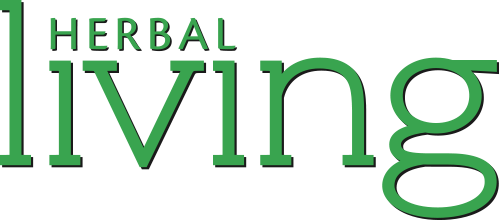Lavender Farm Becomes Agritourism Stop
Shared From Grit Magazine – Written By: Deborah R. Huso
Julie Haushalter decided to start growing some lavender of her own, and she began with 150 plants, selling the harvested buds, as well as products she made from lavender, at the nearby Harrisonburg Farmers’ Market. The business took off like wildfire, leading Haushalter to give up her day job and start growing and selling lavender to the public full time about six years ago.
She now grows 9,000 lavender plants in many varieties, hires area college students to help with harvests, and has a retail shop right on the farm.
“Some of the products in our store are made completely from scratch,” Haushalter says, “and we do all of our own bottling and labeling here.”
While it all sounds wonderfully romantic, you might be wondering how she pulled off this dreamily scented career choice. Well, it hasn’t been easy.

Harvest advice
Currently, White Oak Lavender Farm grows 30 varieties of the plant, which are harvested for the scents and oil of their flower bud.
Haushalter advises applying fabric to lavender when planting, to reduce weed invasion.
“Once you’ve prepared the soil, however, it’s a full-sunshine, drought-tolerant, pH 7 to 71⁄2 plant that likes good drainage,” she says. Haushalter quickly learned when she started growing lavender to plant the individual plants farther apart to keep air moving around them. She recommends 3 to 5 feet apart.

When harvesting, timing is everything. Haushalter says that if you’re growing lavender for dried bundles, you should harvest when the first couple of flowers have bloomed on the stem, because flowers at full bloom will drop right off the stems after drying.
If harvesting for buds, she advises harvesting when the plants present one-quarter to one-half flowering. In the case of essential oil, however, the best time to harvest is actually once half the flowers on the stems have withered, as that’s when oil is likely at its peak.
Haushalter distills her own lavender on site, using a contraption that resembles a whiskey still. She says it takes about half an hour to obtain the best essential oil through straight steam distillation. The steam essentially disrupts oil membranes in the lavender plant to release the essential oil. The steam then carries the oil into a condenser where it reliquefies, leading the light essential oil to float on top. Haushalter or one of her employees then separates the oil and water. The water portion is referred to as hydrosol or floral water, which can be used to create linen or body sprays, and even facial toners.

When harvest time comes around, Haushalter and her employees take the plants to the drying and debudding shed. Staff members harvest everything by hand. Not long ago they also debudded by hand, rolling the plants in their palms, letting them drop into barrels, and then sifting. Haushalter now has a debudding machine, though, which she says has turned two and a half weeks of work into a two-hour effort.
She sells leftover stems to another area farm family, which packages the stems with poultry feather absorbents for cleaning up chemical spills and masking the odor of the feathers. Haushalter tries to run as sustainable an operation as possible. Even the retail plants she sells are packaged in plastic made from lavender stems and feathers.
Teaching
Selling products is only a small portion of White Oak’s value-added revenue. In order to teach people how to use lavender, Haushalter has started workshops and home parties where she or a member of her staff teaches others how to make lavender-infused products, from soaps to jellies.
“Part of what we want people to experience is how you use lavender,” Haushalter says. Hence, the home party business. She’s even bringing in consultants to help with the parties. “That’s our newest way to keep the message with the product,” she says.
Meanwhile, her agritourism efforts have paid off, too, despite a few early discussions with neighbors over permits and visitor traffic.
“Agritourism is part of our identity. Right from the beginning, we were curious about how lavender grew, and a lot of our work is education.”
She offers farm tours daily for $8 per person, access to the farm discovery area (with its goats, ducks, turkeys and chickens) for $3 per person, and she also hosts workshops on wand-making and aromatherapy every Friday. White Oak Lavender Farm provides custom workshops to groups as well.
Plant for Success
With so many varieties of lavender available, it’s no easy task figuring out which type(s) to grow. Overall, it’s an incredibly hardy plant, but it does require good drainage. Here are some of Haushalter’s recommendations based on various uses.

Angustifolia, also known as English lavender, is one of the hardiest varieties, being drought- as well as cold-tolerant while emitting a heady fragrance. It’s probably one of the most common ornamental varieties. Its buds can be dried for herbal teas, and its oil is commonly used in massage oils and lotions.
Provence is another popular variety, highly fragrant and long-blooming. It is harvested mainly for its buds, which are edible, as well as essential oil. Haushalter cautions against planting it at altitudes above 1,600 feet, however, as it is too tender for a vertical climate.
Grosso is a hybrid of cold-tolerant English lavender and heat-tolerant Portuguese lavender. It is widely considered the best plant for commercial-level production of essential oil.
Royal Velvet is small- to medium-size with deep purple blooms, harvested mainly for culinary uses.
While the life cycle of any given lavender plant varies with the variety, it’s a good rule of thumb with all plants to cut back faded flower stems to promote more vigorous growth.
Want to find out more? Learn five great uses of aromatic lavender, for bothe the experienced grower and the greenhorn.










